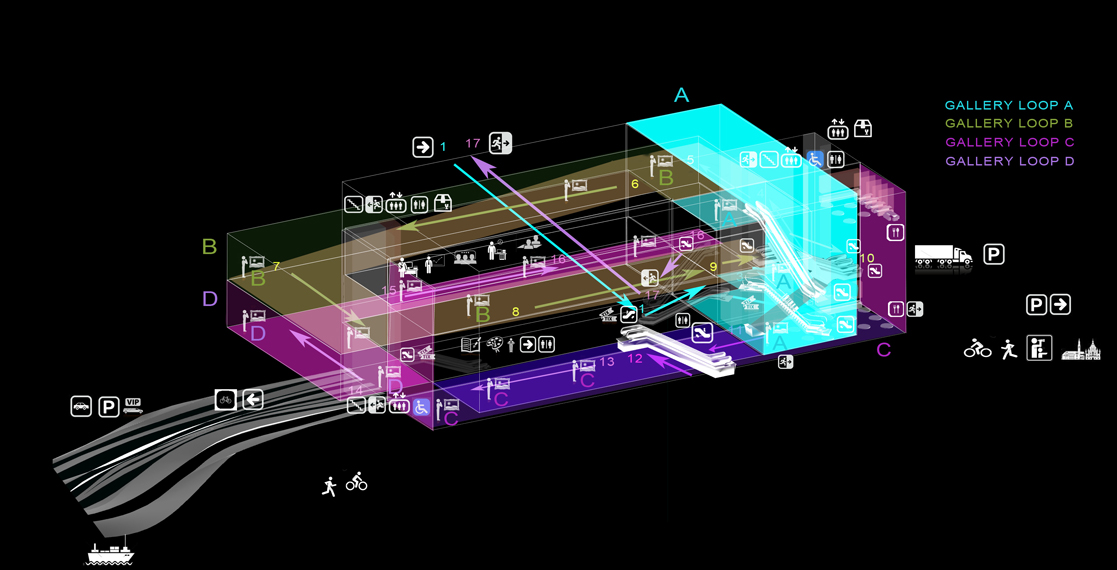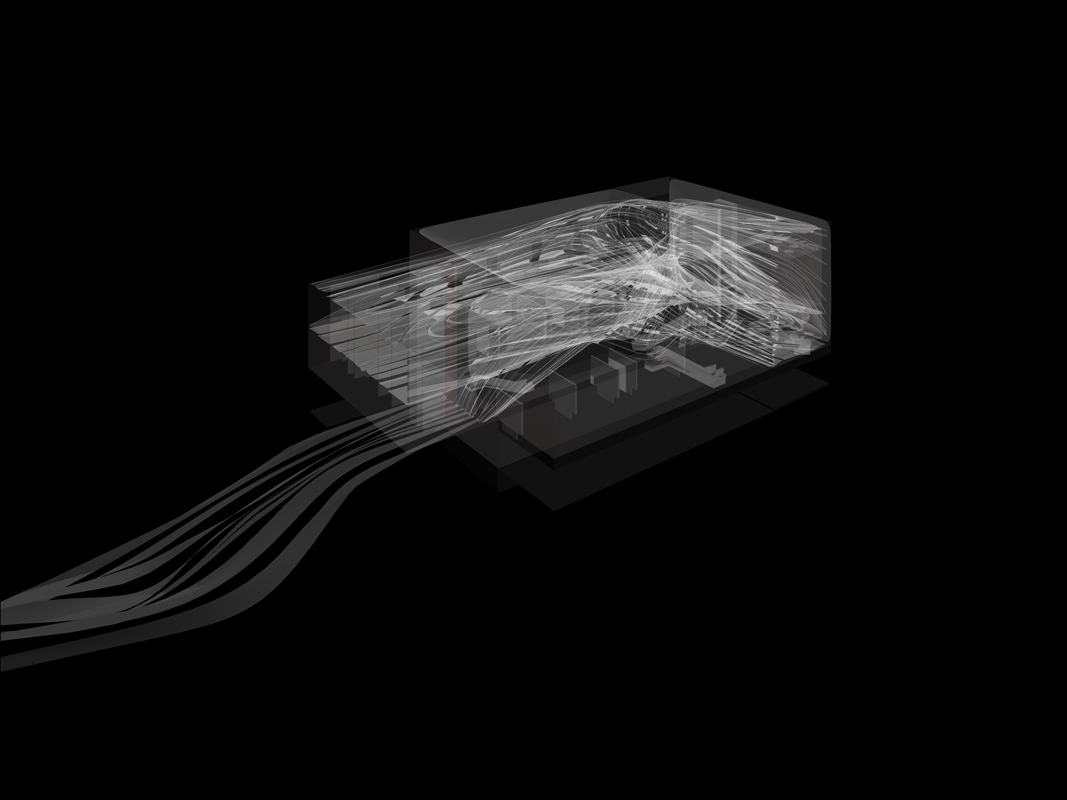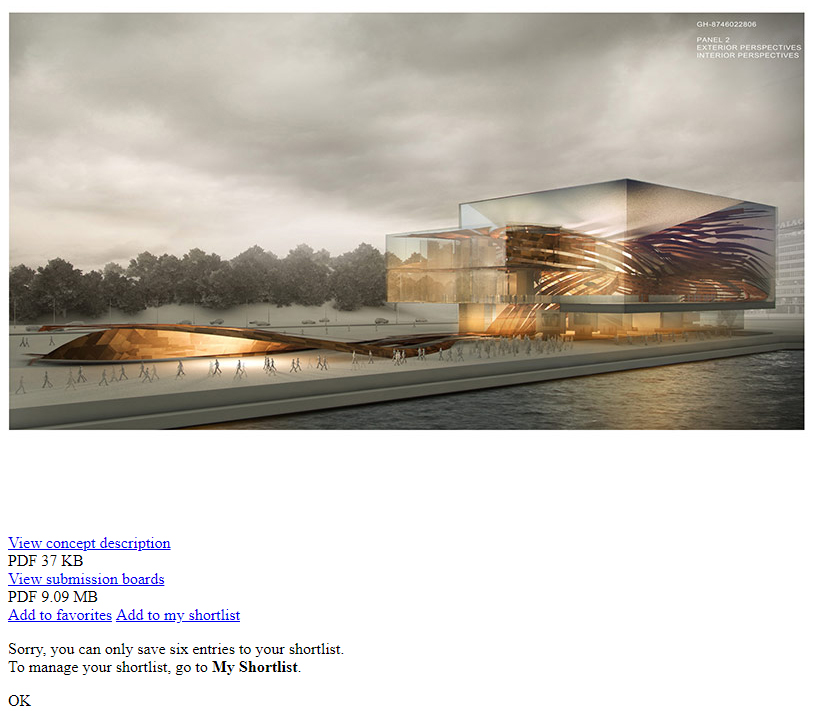Guggenheim Museum Helsinki Competition
Entry: GH-8746022806
Year: 2014
Eiroa Architects | e-Architects, New York, Buenos Aires
Design Lead Research: Pablo Lorenzo-Eiroa
Design Team: Felicia Killiot, Peter Douglas
Renderings: Craft CG - Computer Graphic Agency
All images|Photos: ©Eiroa Architects
web: www.eiroaarchitects.com
"The Museum of Looping (topological) Paths"
The genesis of a “Museum” is a unique diagram. In this proposal, the
diagram is ‘surface building’ within a
building. An archetype composed by circulation within a
museum and art containment. A novel
relationship enfolding topology and Cartesian
containment: Cartopological Space. One inhabits and
experiences multiple topologies through
both positive and negative spaces. The pochéd space and ‘positive
and negative spaces’ of three enfolded
spaces then constitute the building. The cognitive
experience of the viewer provokes awareness of the
possibility of a truly
multidimensional space, as opposed to a space limited by two
dimensions (plan / section). This
cognitive spatial relationship informs the experience of the viewer
and results in a critique of the iconic
image of a spectacular building. Architecture within
architecture, or a building within a building, defines its
topology. Architecture is thus a piece of
art contained within a spatial topology.
"The Museum of Looping (topological) Paths"
Spatial Concept: the Park's Winter Garden
The relationship between “city” and “park” resists any linear
solution. In a typical contextual situation, a figurative building
mimics the extension of the landscape, thus proposing a landform
building. In this proposal, “city” and “park” enfold into one
another, critiquing each other while using each other. The building
becomes an extension of the park as an enfolded internal topology:
displacing the Cartesian container.
A Cartesian coordinate corner space establishes a reference, in
relation to the city organization. This corner is displaced and its
referential condition is surpassed by multiple interacting museum
loops and spaces. The result is a three-dimensional diagram-space as
the beginning of a multi-dimensional experiential space. Each
coordinate (X,Y,Z) is displaced in its interior-exterior
relationship, a looping space with a continuity and displacement of
reference: inside-outside, a spatial flow in three coordinates.
Image
Perceived from four distinct different locations, the building’s
image communicates differently to the multiple relationships the
museum establishes with its context. From the waterfront, it is
perceived as a clear glass box, which is deformed to establish
interior-exterior continuous relationships, but shows internal
organization contrasting and tensioning the abstraction of its
containment.
Program
Three loops define the exhibition program. Each loop articulates
multiple building types that perfectly answer the functional
complexity of a museum like the Guggenheim, with space for
flexibility in the arrangements and proportions of each functional
requirement. All three loops are
accessible from a single entry point at the northwest corner-tower
typology, but also combine into a single loop or a separate loop.
The first loop is accessible from
the west side of the city, proposing a direct access to the
lobby/atrium laterally through public retail. This loop defines the
upper perpendicular smaller flexible galleries, visually and
experientially connecting the atrium and the glass-box building
envelope, relating to the bay. The second loop is accessible from
the north side of the city through the centralized control access,
defining the larger longitudinal galleries.
The third loop is mostly vertical, defining private/service
circulation of the museum. This loop provides separate controlled
access at the ground level to public programs and flexible rooms,
the auditorium and laboratories, while defining offices and staff
services access at the opposite extreme.
Topology
The museum is a city within a city, or an environment that contains
multiple environments. The idea of containment is critiqued each
time there is spatial delimitation. The spatial reading of
inside/outside is broken as spaces flow between city and lobby, the
lobby and galleries and intermediate poched spaces. This topological
space develops several poched spaces or positive-negative
inversions. A single surface-envelope enfolds multiple times.
Environmental
The glass-box envelope uses natural light as passive heating: a
Winter Garden for Helsinki with port and city views. A paneled
system is strategically located at bottom and top of the glass box
defining a passive heating system during winter months, while
maximizing solar during the short days. In summer, panels open
circulating air as a passive cooling system supplemented with
mechanical, when required.




Project Exhibited in
Bugaik International Exhibition, Korea

